By Vicki Uthe
Something became clear to me recently. I realized the difference between macro and close-up photography and concluded that I’m really more of a close-up photographer than a macro person.
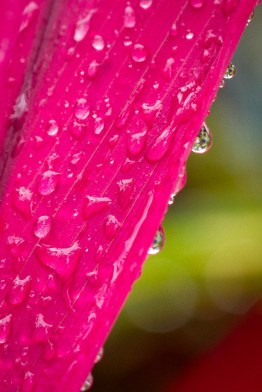
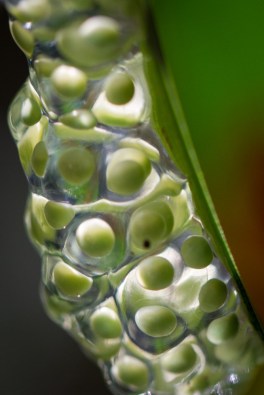
Here’s the main difference as I understand it: With macro, you need a tripod, a non-moving subject, a lot of patience and you get in SO close to a subject that many times you need a caption to tell you what it is. With close-up, you can shoot it with most lenses, you get very close to your subject with a zoom or by walking closer but can still tell what it is without question and you can do it successfully with a moving subject.
The two images above, shot in Costa Rica in 2012, were taken with the 100 mm Canon macro lens. At the time I was SURE I was shooting macro. I even set the lens for it. Turns out these are really just close-ups. If it were a true macro image a single water drop would nearly fill the frame as would only a few of these frog eggs. (I think they are frog eggs).
I decided to dive into my archive and pull up all images shot with my two macro lenses. The first one was a Canon 100mm, f/2.8. I loved that lens and it worked well for me but in pulling up the images I began to realize I mostly shot close-ups in macro mode or not in macro mode at all but at 100mm. My other lens is the Olympus 60mm, f/2.8 that I got when I switched to the mirrorless micro four-thirds format camera a couple of years ago. Same thing. Most of my images are either close-ups in macro mode or just shooting at 60mm.
I pulled up over 8700 images shot with those two lenses and precious few could be considered truly macro. My minimalist, photograph as you go shooting style does not lend itself to true macro photography. I like to travel light with as little gear as possible.
At the very LEAST a good macro image requires a tripod and a subject that is very still. A macro lens will reduce the depth of field (the space in your image that is in focus) to the width of a credit card. This means that you must be very precise as to what you are focussing on. The slightest breeze or movement will put a flower or insect out of focus.
If you are truly interested in exploring the world of macro photography I have a resource for you. My good friend, Amy Horn, recently wrote a book with Bruce Taubert, a retired wildlife biologist, on this very subject. You can check out their book and order it here: The Art of Macro Photography
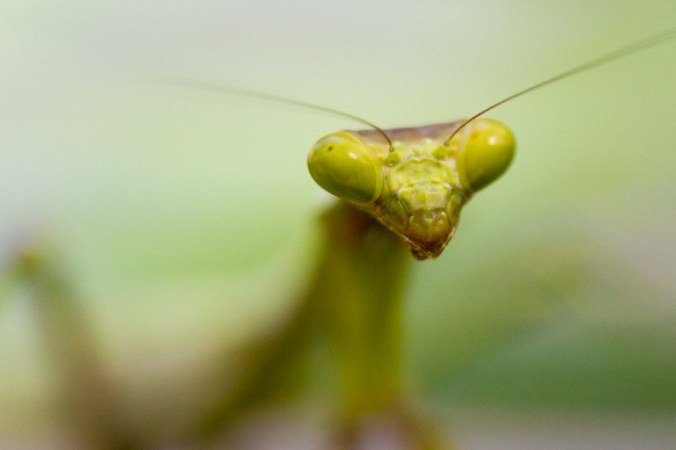
The head of this praying mantis is one of the few images I have that could truly be considered macro. It is handheld and my subject was standing very still.
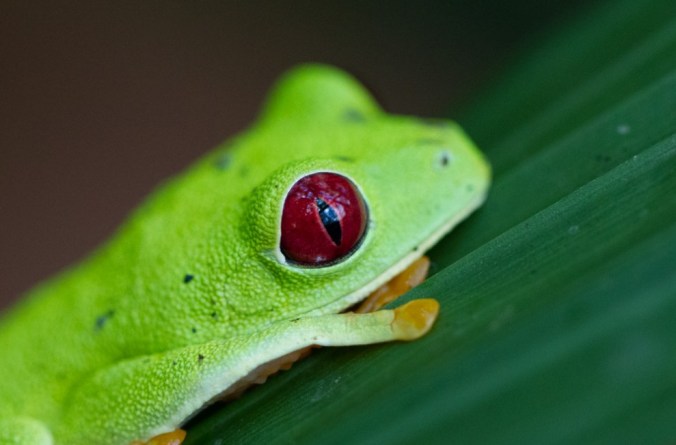
I’m not sure where the line actually is between close-up and macro. This image shows how small the depth of field (the area in focus) is. His eye is about the only thing that is sharp. Always focus on the eyes.
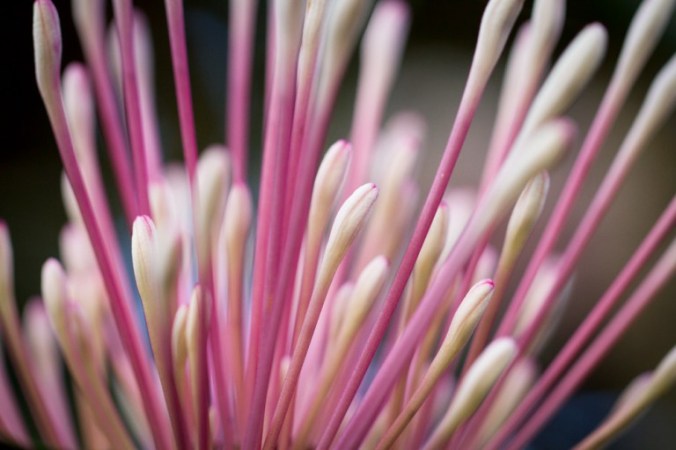
Right? Close-up or Macro? All I know is I should have used a tripod.
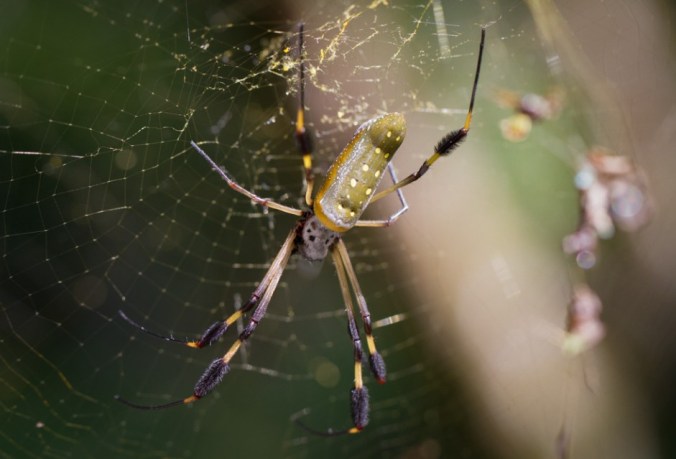
I would for sure consider this one just a close-up. And it didn’t jump on me so I was happy about that. Not sure how much closer I would have been willing to get…
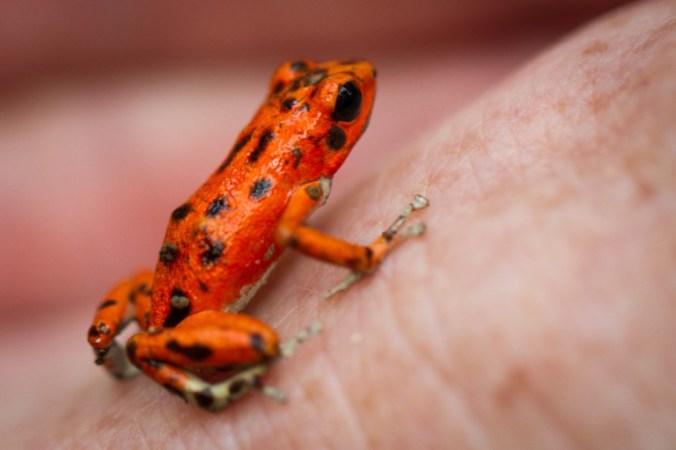
This little red frog was pretty tiny sitting on someone’s finger but I would still classify it as a close-up.
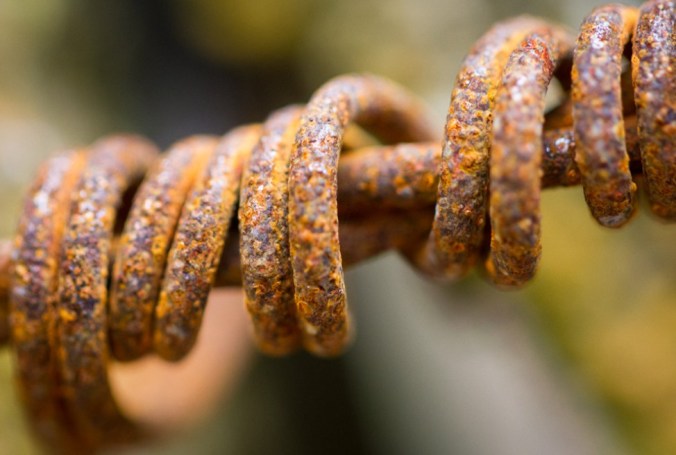
I really liked this image to show the shallow depth of field when your lens is in macro mode. This is rusted barbed wire wrapped around more wire. If you look close one strand is in focus while the one right next to it, and a little back, is not. I can not stress enough how crazy shallow the area in focus is with macro shooting. To the point where there is now software that allows you to focus stack. You take many images and continually adjust the focus only to “stack” them later to create an image where the whole subject is in focus. Check it out, it’s in Amy and Bruce’s book. Pretty fascinating.
Well, that’s all I have for macro. In writing this I’ve learned that macro is not my area of focus, so to speak, in photography. It is a fascinating avenue to explore, however, if you are interested.
Happy Shooting!!
Vicki Uthe is a Volunteer Photo Guide with Arizona Highways PhotoScapes
View Post on Original Blog
https://blog.ahpw.org/2018/06/16/macro-vs-close-up-photography/
